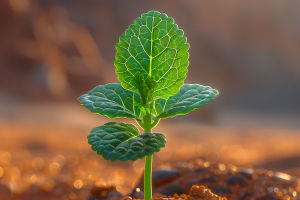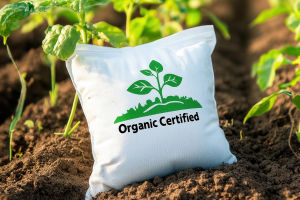Ever applied aloe to a sunburn and felt instant relief? Or sipped chamomile tea to calm your nerves? These aren't just folk traditions passed down without reason.
Behind the quiet beauty of medicinal plants lies an active world of biochemistry—and in some cases, surprisingly potent science. Medicinal plants don't work by magic or mystery.
They operate through specific chemical compounds that interact with the body. Understanding how these natural agents work reveals just how intertwined human health is with the plant kingdom.
They operate through specific chemical compounds that interact with the body. Understanding how these natural agents work reveals just how intertwined human health is with the plant kingdom.
Plant Compounds That Act Like Medicine
When a plant helps us heal, it usually comes down to a few key groups of natural chemicals. These aren't one-size-fits-all remedies—they're highly targeted and surprisingly efficient.
1. Alkaloids – Nature's Potent Tools
Alkaloids are nitrogen-based compounds found in many healing plants. They act powerfully, even in small amounts. One famous example? The compound quinine, originally extracted from the bark of the cinchona tree, was historically used to treat malaria.
What's notable is how these substances mimic or influence our own body chemistry. That's why many plant-derived alkaloids have become the blueprint for modern pharmaceutical drugs.
2. Flavonoids – Antioxidant Superstars
Flavonoids are found in fruits, vegetables, and many herbs. These compounds reduce inflammation, fight oxidative stress, and even support heart and brain health. For instance, quercetin, found in ginkgo leaves and onions, has been studied for its role in reducing allergy symptoms and improving circulation.
According to a 2021 study published in the journal Frontiers in Pharmacology, certain flavonoids also support immune response and help modulate cellular pathways related to aging and chronic disease.
3. Terpenes – Scent With a Purpose
Ever wonder why peppermint feels cool or lavender feels relaxing? That's thanks to terpenes—aromatic compounds that affect our mood and physical systems. Menthol, a terpene from mint, can soothe muscles and open nasal passages. Limonene, found in citrus peels, is under investigation for its anti-inflammatory and mood-elevating effects.
These scent-based compounds don't just smell nice—they alter physiological responses, making them key in therapies that deal with anxiety, digestion, and even pain.
Examples of Powerful Medicinal Plants
Beyond individual compounds, some plants stand out for their real-world healing benefits—backed by science and tradition.
1. Echinacea (Echinacea purpurea)
Often taken as a supplement during cold season, echinacea has immune-modulating effects. A meta-analysis published in The Lancet Infectious Diseases found that echinacea use slightly reduced the chances of catching the common cold. Its immune-boosting power comes from complex polysaccharides that enhance white blood cell activity.
2. Ginger (Zingiber officinale)
A pantry staple and a stomach soother. Ginger contains gingerol, a compound that acts as an anti-inflammatory and antioxidant. Numerous clinical trials have shown its effectiveness in relieving nausea, especially in pregnancy and after chemotherapy.
3. St. John's Wort (Hypericum perforatum)
This flowering herb has long been used to support emotional balance. A 2017 review in Cochrane Database of Systematic Reviews found that St. John's Wort may be as effective as some conventional antidepressants for mild to moderate depression—though it can interact with medications and should only be used under medical supervision.
What Science Still Needs to Catch Up On
While many medicinal plants are backed by solid research, not all herbal remedies are equal. Some are supported mostly by tradition, others by preliminary studies—and a few by placebo effect alone.
1. Dosage Matters
One of the biggest challenges in using plants medicinally is determining how much is effective. Too little and it does nothing. Too much and it may cause harm. This is why expert guidance is essential, especially for herbs that interact with other medications.
2. Whole Plant vs. Extract
Isolated compounds can behave differently than when they're consumed in the context of a whole plant. The "entourage effect" is a term used to describe how compounds within a plant may work better together than apart. That's why some herbalists prefer whole-plant preparations rather than lab-isolated ingredients.
Plants and People: An Ancient Partnership
Humans have turned to plants for healing for thousands of years—not just for physical ailments, but for emotional and spiritual balance too. The fact that modern medicine continues to look to plants for drug development is a testament to their continued relevance.
In 2023, the World Health Organization reaffirmed the importance of integrating traditional medicine into modern systems, emphasizing the need for more scientific validation while respecting the cultural roots of plant healing.
Are You Using Plants to Heal?
Maybe you keep a bottle of peppermint oil nearby for headaches, or sip licorice root tea for a sore throat. If so, you're part of a global, age-old relationship between humans and the healing power of plants. Just remember—natural doesn't always mean harmless, and potency comes with responsibility.
Which medicinal plant have you found surprisingly effective in your own life? Or is there one you've always been curious about but haven't tried yet? Let's talk about how nature's quiet healers are still working wonders in our daily lives.


